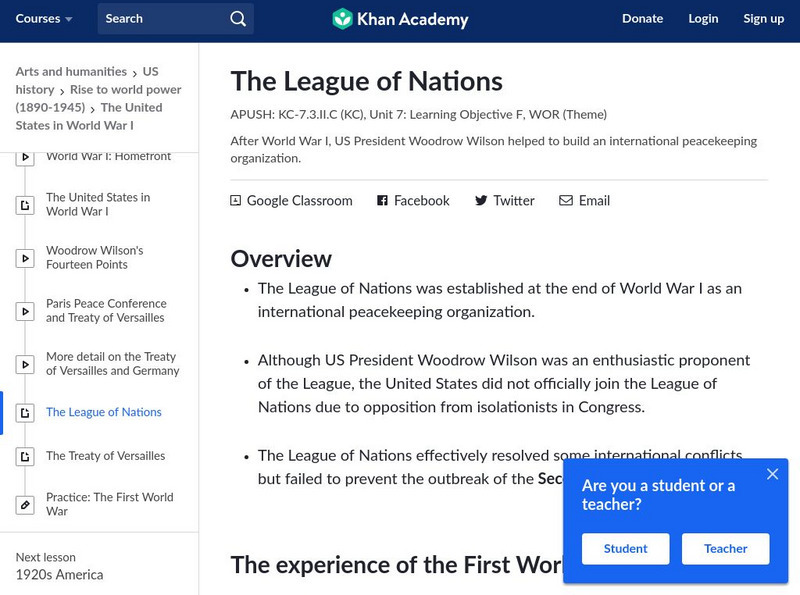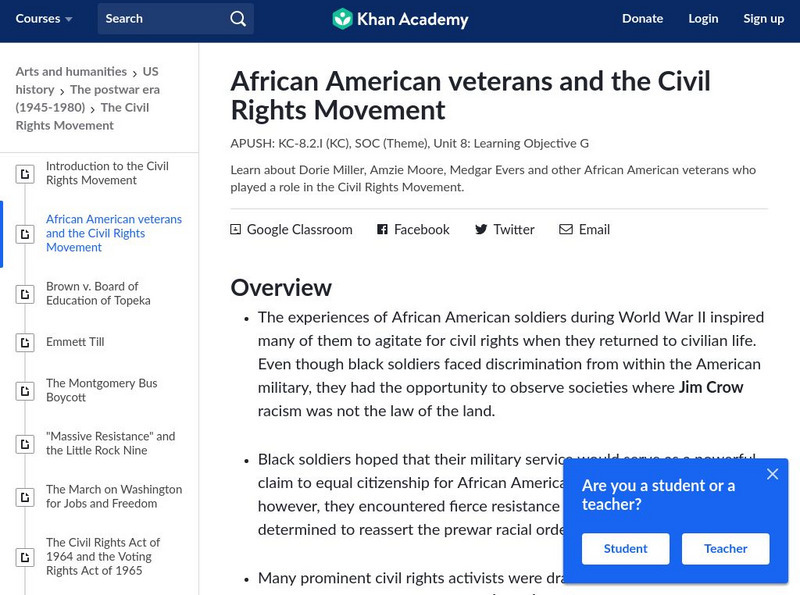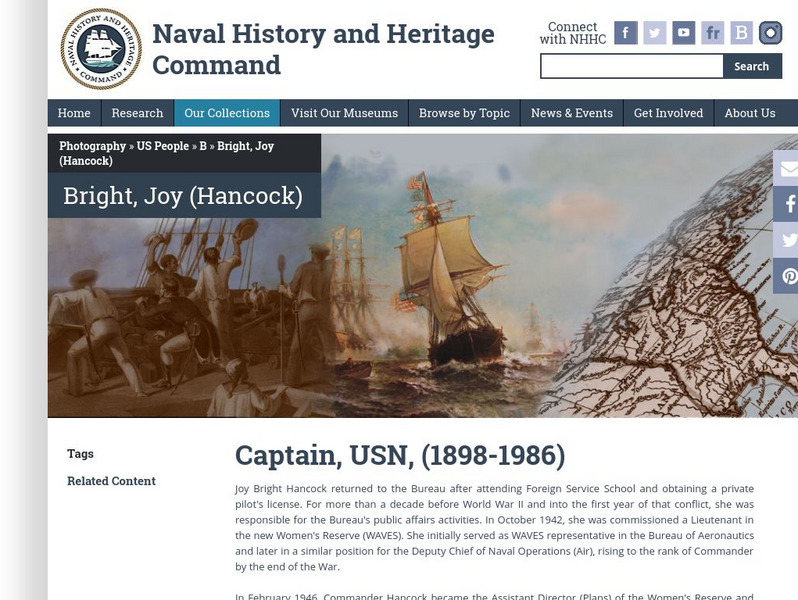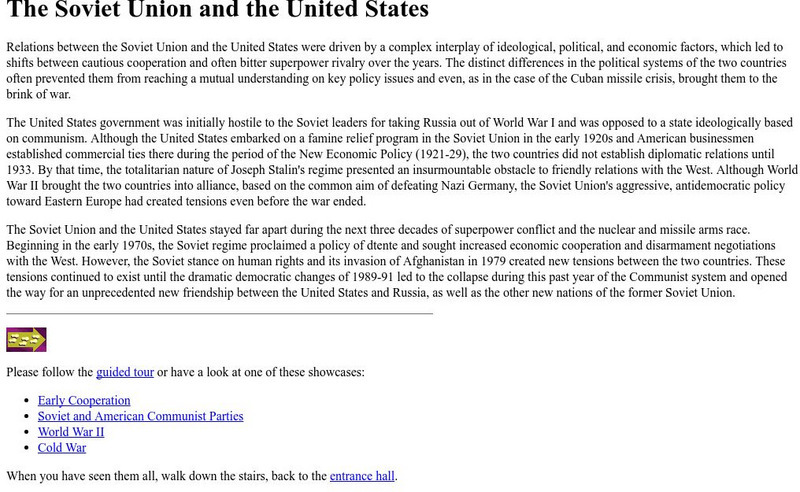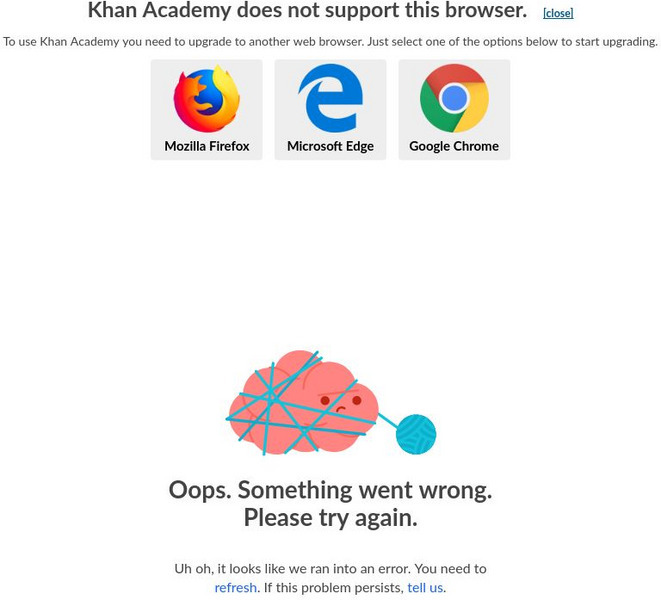Alpha Omega
History and Geography—Two World Wars
Here's a combination textbook/workbook that examines the conditions in Europe that lead to World War I. Ideal for homeschoolers as well as classroom use.
Spark Notes
The Interwar Years (1919-1938): Study Questions
In this online interactive history worksheet, students respond to 10 short answer and essay questions about years between World Wars I and II.
Khan Academy
Khan Academy: Fdr and World War Ii
Discusses how Franklin D. Roosevelt guided the United States through World War II and laid the groundwork for Harry Truman to assume the role after his death.
Khan Academy
Khan Academy: American Women and World War Ii
Read about the opportunities that women had during World War II to work in jobs that had previously been unimaginable. To assist working mothers, the first childcare programs were begun, and efforts were made to make jobs in the defense...
Ducksters
Ducksters: World War Ii History: Ww2 Us Home Front for Kids
Kids learn about the history of the United States home front during World War II. How people back home helped to fight the war.
US Army Center
U.s. Army Center of Military History: Mobilization in World War Ii
This site from the US Army describes steps taken in the United States to prepare for war. Scroll through to see how the United States mobilized for World War II.
Khan Academy
Khan Academy: Ap Us History: 1890 1945: The Us in Wwi: The League of Nations
Discusses the background to establishing the League of Nations, its role in facilitating peace negotiations, and why it ultimately failed to prevent World War II. Explains why the United States never joined it and how the United Nations...
Khan Academy
Khan Academy: Pearl Harbor
Describes the surprise attack on Pearl Harbor by Japan, an event that catapulted the United States into World War II.
Khan Academy
Khan Academy: The Baby Boom
Looks at the baby boom in America after World War II - what caused it, why it lasted so long, and the far-reaching social and economic impact it has had on the United States.
Khan Academy
Khan Academy: The Gi Bill
The GI Bill is explained. It provided benefits to American veterans of World War II in the form of education, loans, unemployment income, etc.
Khan Academy
Khan Academy: African American Veterans and the Civil Rights Movement
Many African American veterans joined the Civil Rights Movement after World War II when they found themselves facing continued discrimination at home. Learn about some of the veterans who were prominent activists.
Khan Academy
Khan Academy: Ap Us History: 1890 1945: The Us in Wwi: The Treaty of Versailles
Looks at the Treaty of Versailles, what its terms were, why America never ratified it or joined the League of Nations, why Germans grew to resent the burdens it imposed on them, and how this contributed to Hitler's rise to power....
Khan Academy
Khan Academy: Start of Cold War, Part 1: Yalta Conference and Containment
At the end of World War II, the Yalta Conference saw the splitting of Germany into four zones and the United States began a policy of containment of communism.
US Navy
Nhhc: Oceanic Period (1890 1945)
Read about the build-up of the U.S. Navy after the Spanish-American War and how it was used to protech the country in World Wars I and II.
US Navy
Naval History and Heritage Center: Captain Joy Bright Hancock
A site from the Naval Historical Center provides biographical information on Joy Bright Hancock (1898-1986), champion for women in the Armed Services.
ibiblio
Ibiblio: The Soviet Union and the United States
This site from ibiblio.org gives information about the historical relationship between the Soviet Union and the United States. After reading the summary on this page, click on the links at the bottom of the page to read about early...
Khan Academy
Khan Academy: The United Nations
Discusses the formation of the United Nations after World War II as a way to provide a venue for resolving differences between countries and as an international peacekeeping organization.
Khan Academy
Khan Academy: Women in the 1950s
Looks at what life was like for women in 1950s America. Examines the tension between the expectations of conformity and domesticity and an emerging discontent as many women chose to continue working after World War II. Meanwhile, African...
Khan Academy
Khan Academy: The Manhattan Project and the Atomic Bomb
Discusses the Manhattan Project of the United States which worked on developing nuclear weapons during World War II. It led to the two atomic bombs that were dropped on Japan in August 1945, ending the war with Japan.
Khan Academy
Khan Academy: Japanese Internment
Discusses the internment of Japanese Americans during World War II, an action that resulted from Franklin D. Roosevelt's Executive Order 9066. The constitutionality of the order was challenged all the way to the Supreme Court by Fred...
Khan Academy
Khan Academy: The Growth of Suburbia
The GI Bill made it possible for World War II veterans to finance the purchase of a house. This, combined with mass production of houses, led to the growth of suburban communities, including three Levittown suburbs.






